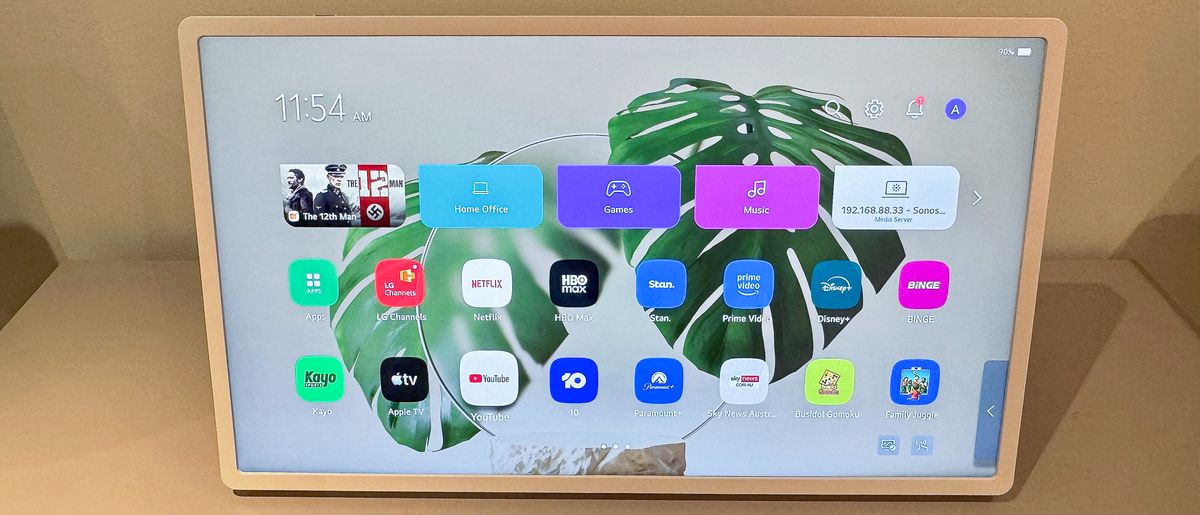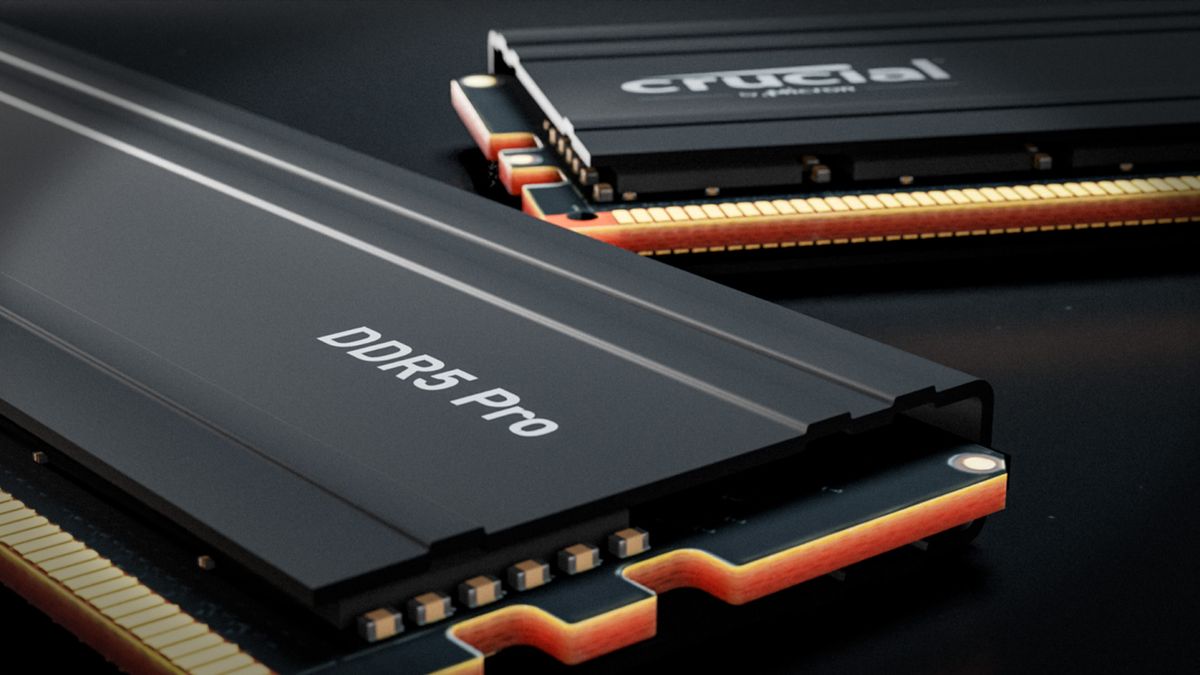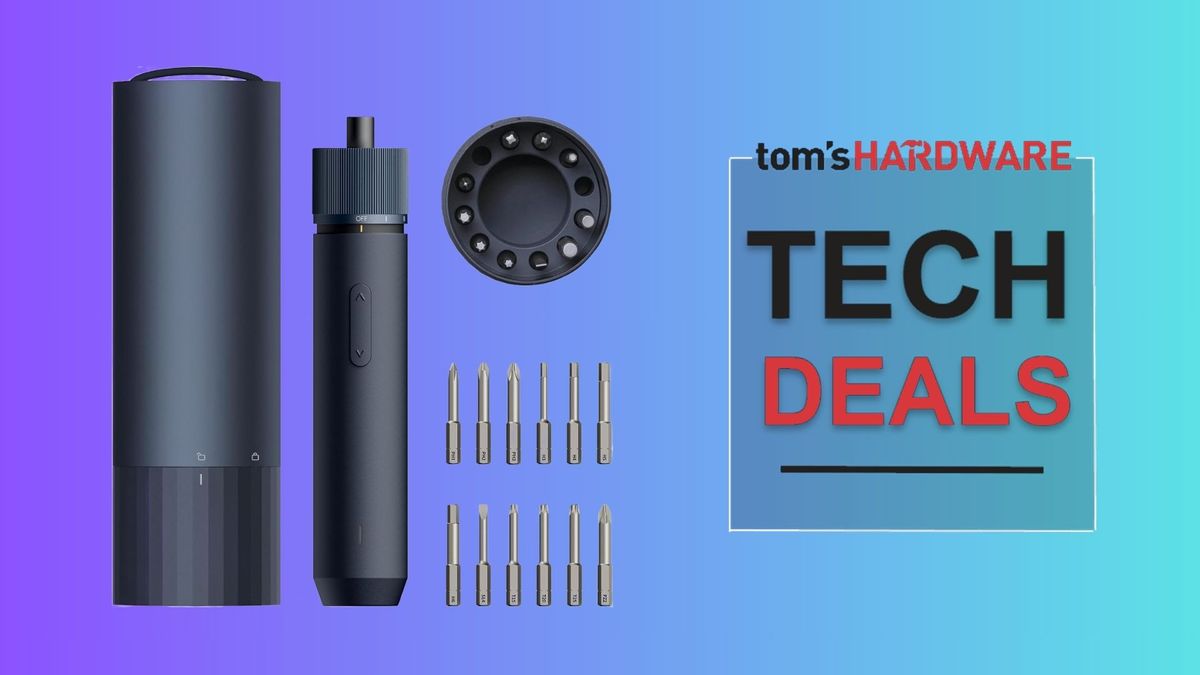Few gaming laptops stand out like Razer’s Blades. They’ve long been the gaming alternative to the MacBook Pro: sleek, powerful, and grown-up looking, without the bulk and garish stylings of most gaming laptops. But cramming powerful graphics cards into slim confines means Blade laptops have a tendency to run hot, get loud, and carry ridiculous price tags.
So you’d be excused for feeling anxious that the 2025 Blade 16, which offers Nvidia’s most powerful laptop GPU, is 30 percent thinner and significantly lighter than its predecessor. In my initial testing, it only seemed a little more powerful than the 4090 Blade it replaces.
But now I’ve used it much more extensively. I’ve even tested it against cheaper, thicker RTX 5080 laptops with more cooling capacity, which are the better buy if you’re focused squarely on gaming performance. However, nothing quite matches the Blade 16’s balance of top-end specs, thin chassis with all-black aesthetics, and a lovely OLED screen I’d happily stare at all day.
$4900
The Good
- Great fit, finish, and build
- Slim and sleek design for a gaming laptop
- Excellent OLED screen comes standard
- Very good performance, especially in DLSS 4 supported games
The Bad
- Starts expensive and gets expensive-er
- Middling battery life
- Thinness aside, minimal improvements over last year’s model
- A cheaper 5080 laptop may be money better spent
- The matte black finish smudges easily, and the Razer lid logo is still a little cringe
The 2025 Blade 16 is just 0.69 inches at its thickest (0.59 inches at the front) and weighs 4.6 pounds. That isn’t just thinner and lighter than last year’s 0.87-inch / 5.4-pound Blade 16, it’s also a bit lighter than the 16-inch MacBook Pro — though the Pro is slightly thinner overall, at 0.61 inches. And it’s priced like a MacBook Pro: the Blade 16 starts at $2,999.99 with an RTX 5070 Ti graphics card.
Before Razer removed its US preorder pages and pricing and then brought some of them back amid April’s ongoing tariff chaos, our review unit, with an AMD Ryzen AI 9 HX 370 CPU, 32GB of RAM, 2TB SSD, and a Nvidia RTX 5090 mobile GPU, was listed at $4,499. That configuration isn’t listed anymore, and the only model with a 5090 now costs $4,899 but comes with twice the RAM and storage. It’s not clear how much this configuration of the Blade 16 will cost or if it will be available. But one thing is certain: the Blades will stay expensive.
- Screen: A
- Webcam: B
- Mic: B
- Keyboard: B
- Touchpad: B
- Port selection: A
- Speakers: C
- Number of ugly stickers to remove: 2
All models of the 2025 Blade 16 come with an excellent 16-inch, 240Hz, and 2560 x 1600 OLED display. With superb color contrast and sharp looks, it’s one of the laptop’s strongest assets. It’s not as high-res as the 16-inch MacBook Pro’s 3456 x 2234 mini-LED, but its variable 240Hz refresh is twice that of the Mac’s.
And the rest of the Blade 16’s hardware feels “pro” without losing sight of its gaming focus. It has two USB 4 ports (one on each side), three USB 3.2 Gen 2 Type-A, HDMI 2.1, a full-size UHS-II SD card reader, and a proprietary charging port with a reversible plug. It’s the same connector as last gen, though the power brick is now 280W instead of 330W.
The Blade’s 1080p webcam looks good enough and handles mixed and low lighting just fine, though it’s missing the privacy shutter from last year. Its six-speaker setup gets very loud and sounds pretty full, though a bit muddy compared to the MacBook Pro. The keyboard has deeper key travel and more tactile feedback than a MacBook’s, and its trackpad is equally humongous — though its top-hinged design is only okay compared to Apple’s excellent haptic trackpads. Razer’s trackpad is so large I was at first prone to accidental clicks with my palms, but I adjusted to it, just as I had to learn to not hit the mic mute key on the right-hand macro key column when aiming for the arrow keys. And while these components don’t always match Apple’s in terms of quality, they’re a cut above most other gaming laptops.
Last year’s thicker Blade had surprisingly good heat management compared to earlier models, so I was worried that the thinner 2025 model would be a step backward. Instead, it’s a small step forward, with caveats. The 5090 model has between 5 and 20 percent higher frame rates than the 4090 in Cyberpunk 2077 and Black Myth: Wukong, while staying around 4.5 degrees Celsius cooler, with an average GPU temperature of 81C compared to 86C. The chassis never got uncomfortable; I even played games with it on my lap without any problems (though I’ll likely feel different in the sweltering summer months).
Since my initial testing, I’ve also been using the Gigabyte Aorus Master 16 and Asus ROG Strix Scar 16 — both configured with the RTX 5080 (the next GPU down from the 5090), both much thicker than the Blade 16 and both at least $1,000 cheaper. In a volley of Black Myth: Wukong and Cyberpunk 2077 benchmarks at 4K and 2.5K, the Blade 16’s average frame rates were at most 3 to 7fps higher (up to 27 with 4x frame generation), putting the 5080 nearly on par with the last-gen flagship RTX 4090 Blade 16. Both thicker laptops pushed the RTX 5080 past 140W, with average GPU temperatures of 76C.
Razer says the Blade 16’s total graphics power for sustained workloads is 135W, and Nvidia Dynamic Boost can push that to 160W in short bursts by pulling power from the CPU’s allowance. But the RTX 5090 can draw up to 150W, so it’s possible the RTX 5090 will perform better in a laptop with more cooling capacity. But I tested the Blade 16 with Razer’s Laptop Cooling Pad, which lets the Blade’s GPU pull closer to 150W; unfortunately, even though the GPU stayed around 9C cooler, it didn’t make any consistent difference in frame rates, and the loud cooling fan drove me up the wall.
Even the fastest laptop GPU is constrained by the power and cooling capacity of the laptop it’s in. The RTX 5090 laptop GPU in the Blade 16 is about on par with a desktop RTX 5070, so it’s right at home with the Blade’s 2560 x 1600 native resolution, and using Nvidia’s DLSS 4 and Multi Frame Gen software can help it take advantage of that 240Hz display — especially on the most graphically intense games.
For example, with DLSS and Multi Frame Gen, I was able to average 146fps in the new Half-Life 2 RTX demo at native 2.5K resolution using ultra settings. It was a graphical feast of volumetric lighting and path-traced reflections. Nvidia’s software tricks can sometimes cause small artifacting and a little input latency. But, frankly, if you’re not the type to go pixel-peeping, you’ll likely appreciate the smooth performance at high resolutions more than you’ll notice an innocuous anomaly like a small bit of smearing or ghosting.
Personally, I’m cool with using DLSS and frame generation for single-player games, because being able to crank something like Cyberpunk 2077 to maxed-out “overdrive” settings with full path tracing and 151 average frames per second is just lovely. But it isn’t magic: if a game isn’t running smoothly before frame generation, it’ll still feel like a choppy mess afterward, even if Multi Frame Gen pushes it over 60fps. To play at 4K — on an external monitor or the screen on the upcoming Razer Blade 18 — you’ll probably still have to turn some settings down.
The Blade 16’s gaming performance on battery is pretty good, but the experience varies by game. Nvidia’s Battery Boost uses just enough of the Blade’s power to target 60fps and lowers it to 30 during non-action moments like cutscenes and map displays. Using the Nvidia app’s optimized settings, I was able to get a little over 90 minutes of Cyberpunk 2077 on a charge and nearly two hours of Elden Ring on another. But Cyberpunk was set to low without ray tracing, running with DLSS 4 set to ultra performance mode and averaging 120fps thanks to 4x Multi Frame Gen (so around 30fps if you exclude AI frames). Elden Ring, which doesn’t support DLSS, averaged just 38fps.
While running either game, the GPU was limited to 30W and the CPU around 10W — I didn’t even hear the fans. By comparison, while plugged in, Cyberpunk’s one-click optimization uses a mix of high and ultra settings, complete with ray tracing and balanced DLSS. That yields an average 179fps with the GPU getting 114W and the CPU at 36W. The fans run loud, but not enough to be a nuisance. Games look so much better plugged in, and games are probably why you’re spending $4,500 here.
That plugged-in performance does also translate to the Blade’s content-creation prowess. It ran our Premiere Pro 4K export test in one minute, 56 seconds — 17 seconds faster than Apple’s 16-inch M4 Pro laptop ($3,349 as tested), though 38 seconds slower than the M4 Max model ($6,149 as tested).
| Geekbench 6 CPU Single | 2968 | 2922 | 3113 | 3976 | 4011 |
| Geekbench 6 CPU Multi | 15922 | 17606 | 19709 | 22615 | 26422 |
| Geekbench 6 GPU (OpenCL) | 213016 | 187733 | 200189 | 70018 | 115870 |
| Cinebench 2024 Single | 119 | 125 | 137 | 179 | 182 |
| Cinebench 2024 Multi | 1287 | 1505 | 1965 | 1744 | 2043 |
| PugetBench for Premiere Pro | 12593 | 12239 | 13409 | 8914 | 12400 |
| PugetBench for Photoshop | 8679 | 8149 | 8482 | 12374 | 13424 |
| Sustained SSD reads (MB/s) | 6726.25 | 6654.46 | 6832.06 | 6737.84 | 7340.85 |
| Sustained SSD writes (MB/s) | 4931.41 | 4942.02 | 6550.21 | 7499.56 | 7969.07 |
| Blender classroom test (seconds, lower is better) | 18 | 18 | 21 | not tested | 19 |
| 3DMark Time Spy | 22498 | 19818 | 20977 | not tested | not tested |
| Premiere 4K Export (lower is better) | 1 minute, 56 seconds | not tested | not tested | 2 minutes, 13 seconds | 1 minute, 18 seconds |
It’s a decent alternative to the MacBook Pro for content creation, and far exceeds it in gaming, but the Blade lags far behind in battery life. Not just behind the MacBook Pro — which can get up to 18 hours on battery — but even behind other Windows gaming laptops. The Asus ROG Zephyrus G16, with the same Strix Point CPU and an RTX 4070 GPU, lasted over eight hours in mixed non-gaming use. The Blade couldn’t make it six under the same conditions, even with its screen set to 60Hz. I eventually got it through an eight-hour workday by enabling Windows 11’s Energy Saver mode the whole time. It wasn’t perceptibly slower during a relatively light day of Slack, Google Docs, and a one-hour Google Meet call, but Energy Saver limits background app activity, so it could possibly hinder heavier multitasking.
There’s no getting around the fact that Windows laptops deliver less power on battery. On battery power, I can feel sluggishness in Lightroom Classic when the Blade 16 uses integrated graphics to save battery. Macs don’t have that issue. Forcing Windows to use the discrete GPU made it speedy again, but importing around 2,000 RAW files and doing light editing on just half of them used 25 percent of the Blade’s battery in under an hour. If I do that on a MacBook Pro, I’m usually done editing well before I even worry about plugging in.
There’s still nothing quite like the Blade 16. It’s the well-fitting black T-shirt to the try-hard tacticool cargo pants of other gaming laptops, and it’s still the closest thing you’ll find to a MacBook Pro for gaming. The battery life is middling and the price for the 5090 version is obscene, but laptop gamers always pay a premium for portability.
The biggest hangup with the 5090 version of the Blade 16 is that the 5080 is breathing down its neck for $1,000 less. We don’t know yet if the Blade’s thinness is holding the 5090 back — not until I test a Blade with the 5080 or another 5090 laptop with more thermal headroom. Regardless, Razer aimed to make the Blade 16 a return to form, and it delivered.
2025 Razer Blade 16 specs (as reviewed)
- Display: 16-inch (2560 x 1600) 240Hz OLED
- CPU: AMD Ryzen AI 9 HX 370
- GPU: Nvidia RTX 5090
- RAM: 32GB LPDDR5X (soldered)
- Storage: 2TB M.2 PCIe Gen 4 NVMe (with one extra slot)
- Webcam: 1080p, Windows Hello
- Connectivity: Wi-Fi 7, Bluetooth 5.4
- Ports: 3x USB 3.2 Gen 2 Type-A, 2x USB4 Type-C, SD card slot (UHS-II), HDMI 2.1
- Weight: 4.71 pounds
- Dimensions: 13.98 x 9.86 x 0.59 — 0.69 inches
- Battery: 90Wh
- Price: $4,499.99
Photography by Antonio G. Di Benedetto / The Verge

 7 months ago
106
7 months ago
106

















 English (US) ·
English (US) ·